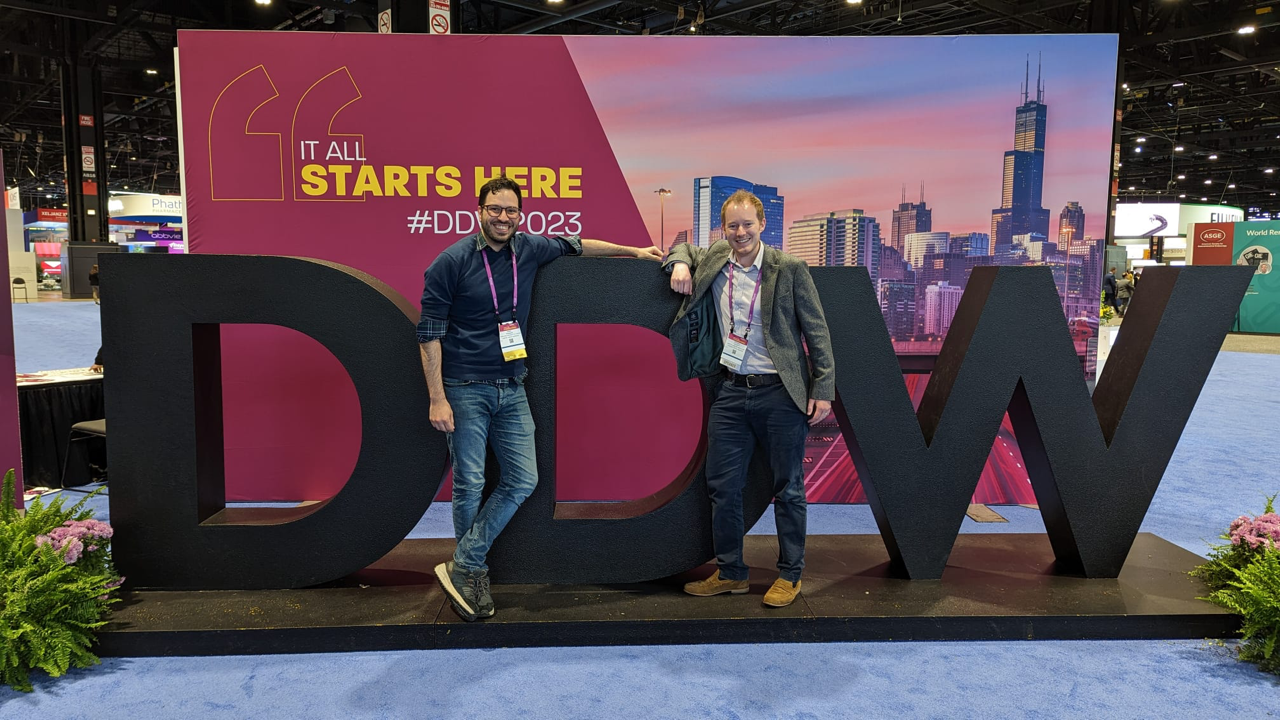
1st August 2024 - I am over the moon to have been made Professor of Gastrointestinal Biology at Queen Mary University of London - thanks to my mentors, friends, collaborators and group members (past and present) whose support I could have not done without.
We have new publications in high impact factor journals over the last academic period!
1. Strasser et al., Concerted epithelial and stromal changes during progression of Barrett's esophagus to invasive adenocarcinoma exposed by multi-scale, multi-omics analysis. BioRxiv 2023 doi: https://doi.org/10.1101/2023.06.08.544265
JOURNAL: BioRxiv
2. Passman et al., Hepatocytes undergo punctuated expansion dynamics from a peri portal stem cell niche in normal human liver. J. Hepatol 2023 doi: 10.1016/j.jhep.2023.03.044 (in press)
PUBMED ID: 37088309
JOURNAL: Journal of Hepatology
This manuscript describes normal human hepatocytes as sharing a common cell of origin with portal biliary epithelial cells. We show the clonal patches of hepatocytes arise from the portal area and grow towards the central vein. This process is punctuated where long periods of stasis are interspersed between clonal expansions. Computational modelling along with in vivo data demonstrate that clonal stasis is likely to last up to 10 years. Changes in this dynamics may have consequences for the evolution of liver cancer
3. Evans et al.,Clonal transitions and phenotypic evolution in Barrett's Esophagus Gastroenterology 2022 vol. 162 , ( 4 ) 1197 - 1209
PUBMED ID: 34973296
JOURNAL : Gastroenterology
Here we show that different gland phenotypes in Barrett's oesophagus are capable of transitioning into different gland types. Barrett's is thought to be an intestinal metaplasia of the oesophagus but we show that glands that contain purely gastric, purely intestinal and mixed lineages evolve within the Barrett's lesion. Indeed, diversity of gland types appears to be strongly related to progression to dysplasia.
Awards at Digestive Disease Week, Chicago 2023!
Richard Hackett and Emanuela Carlotti were awarded a poster of distinction for their work ' Gland phenotypic diversity over time and space as a predictor of progression to dysplasia in Barrett's Oesophagus'
Adam Passman was awarded a poster of distinction for his work ' Deep gland phenotyping in Barrett's oesophagus glands reveals potential biomarkers of cancer risk'
Meng-Lay Lin gave an oral presentation on his work 'IMMUNE CELL PHENOTYPING IN BARRETT'S ESOPHAGUS IN PATIENTS PRIOR AND AT TIME OF PROGRESSION' (recorded talk available if you have access to DDW 2023)
Richard Hackett gave an oral presentation on his work 'MITOTIC AGE OF NON-DYSPLASTIC BARRETT’S ESOPHAGUS DEFINES RISK OF PROGRESSION TO ESOPHAGEAL ADENOCARCINOMA USING A NOVEL TARGETED ALLELE SPECIFIC METHYLATION SEQUENCING ARRAY '(recorded talk available if you have access to DDW 2023).
We have new publications in high impact factor journals over the last academic period!
1. Strasser et al., Concerted epithelial and stromal changes during progression of Barrett's esophagus to invasive adenocarcinoma exposed by multi-scale, multi-omics analysis. BioRxiv 2023 doi: https://doi.org/10.1101/2023.06.08.544265
JOURNAL: BioRxiv
2. Passman et al., Hepatocytes undergo punctuated expansion dynamics from a peri portal stem cell niche in normal human liver. J. Hepatol 2023 doi: 10.1016/j.jhep.2023.03.044 (in press)
PUBMED ID: 37088309
JOURNAL: Journal of Hepatology
This manuscript describes normal human hepatocytes as sharing a common cell of origin with portal biliary epithelial cells. We show the clonal patches of hepatocytes arise from the portal area and grow towards the central vein. This process is punctuated where long periods of stasis are interspersed between clonal expansions. Computational modelling along with in vivo data demonstrate that clonal stasis is likely to last up to 10 years. Changes in this dynamics may have consequences for the evolution of liver cancer
3. Evans et al.,Clonal transitions and phenotypic evolution in Barrett's Esophagus Gastroenterology 2022 vol. 162 , ( 4 ) 1197 - 1209
PUBMED ID: 34973296
JOURNAL : Gastroenterology
Here we show that different gland phenotypes in Barrett's oesophagus are capable of transitioning into different gland types. Barrett's is thought to be an intestinal metaplasia of the oesophagus but we show that glands that contain purely gastric, purely intestinal and mixed lineages evolve within the Barrett's lesion. Indeed, diversity of gland types appears to be strongly related to progression to dysplasia.
Awards at Digestive Disease Week, Chicago 2023!
Richard Hackett and Emanuela Carlotti were awarded a poster of distinction for their work ' Gland phenotypic diversity over time and space as a predictor of progression to dysplasia in Barrett's Oesophagus'
Adam Passman was awarded a poster of distinction for his work ' Deep gland phenotyping in Barrett's oesophagus glands reveals potential biomarkers of cancer risk'
Meng-Lay Lin gave an oral presentation on his work 'IMMUNE CELL PHENOTYPING IN BARRETT'S ESOPHAGUS IN PATIENTS PRIOR AND AT TIME OF PROGRESSION' (recorded talk available if you have access to DDW 2023)
Richard Hackett gave an oral presentation on his work 'MITOTIC AGE OF NON-DYSPLASTIC BARRETT’S ESOPHAGUS DEFINES RISK OF PROGRESSION TO ESOPHAGEAL ADENOCARCINOMA USING A NOVEL TARGETED ALLELE SPECIFIC METHYLATION SEQUENCING ARRAY '(recorded talk available if you have access to DDW 2023).
